December 13, 2015 at 6:39 pm
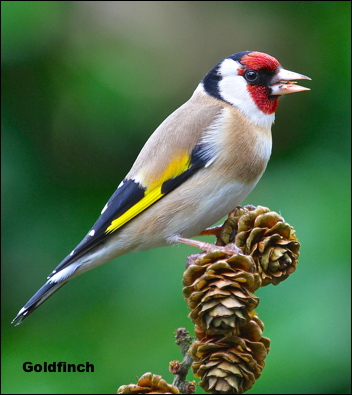
For some reason whenever we have wet weather there are lots of birds feeding in the garden. This week has been exceptional with two garden records being broken after 47 years! Firstly on the 11th seven Bullfinches came to feed together and comprised of five males and two females. The following day, at 9.00am, an incredible 39 Goldfinches were present either on the feeders or on the ground. I tried to make it forty but could not find the extra one! Click here
The only bird movements during the week was the appearance of Goosanders locally along the canal with a pair and four others seen.
December 6, 2015 at 6:58 pm
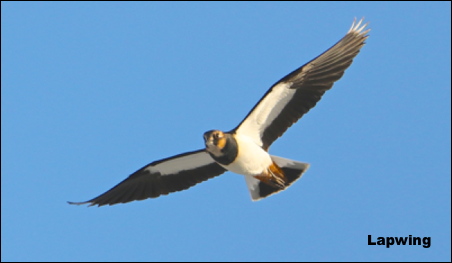
Once again Lapwings are gathering for winter on the roof of Industrial units. My local flock has now reached an impressive 280 on the 28th November and may well increase further as winter progresses.
November has now proved to be the warmest on record and with seven inches of rain the wettest locally since records began. The warmth has resulted in a Hedgehog still feeding in the garden on the 3rd December which is a remarkable date. As for all the wet nights I fear that at least half of all the young Owls that fledged this summer will no longer be with us!
The Merlin is one of the Pennines most secretive raptors and seldom seen away from the hills. The only one that I have ever seen locally was on the 26th December 1976! I had gone out to ring my 1000th Greenfinch of the year (How times have changed!) and what should turn up in the net but a female Merlin! It certainly made my Christmas. This weeks gallery includes photos from breeding Merlin in Bowland. Click here
November 29, 2015 at 3:06 pm
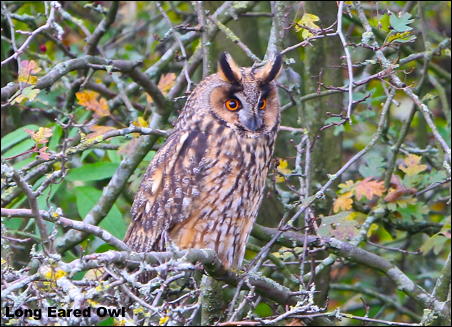
The Holy Grail of Autumn / Winter birdwatching in the Pennines is the finding of migrant Long Eared Owls. I spend many hours searching the hawthorns in remote Pennine valleys in the hope of finding just one magical Owl. Last winter I found none but this winter there has been an influx from across the North sea and some weeks ago I struck lucky. Not one but three Long Eared Owls roosting close together in a secluded, sheltered valley.
For five weeks I have been visiting the valley dressed in the same clothes and never flushing the Owls to carefully take photos as they roosted in different positions, depending on wind directions. On one occasion there were four birds present and then last weekend we had the first winter snowfall and they had all gone!!
What an absolute joy and privilege it was to observe our elusive Owls without them ever being disturbed. Perhaps they will come back later in the winter?
Finding four Long Eared Owls last month was good but it pales into insignificance compared to the big influx of 1975. In December of that year two local roosts had more than a dozen birds and even such places as Tandle Hill Country park had up to six birds present. One of the most regular places for Long Eared Owls in recent years has been around Elton Reservoir in Bury. My Owls must have gone somewhere so good hunting!!
Click here
November 22, 2015 at 7:04 pm
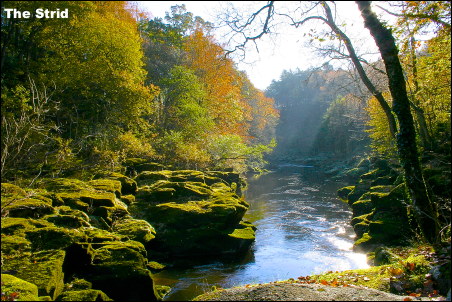
Snow cover on the ground today has brought to an end a spectacular Autumn. With the exclusion of the last couple of weeks we have had record temperatures and exceptional colours in the hills. This weeks blog photo is of the Strid in Wharfedale where the whole of the river Wharfe enters a spectacular gorge covered in moss and surrounded by Beech trees – it makes a perfect autumn picture. The record temperatures this autumn had a garden hedgehog still active on the 17th November and even more surprising a male Adder out in the sunshine on the 2nd November.The only downside is that the cold spring and Summer has now resulted in their being very few berries on the Rowan and Hawthorne trees. What thrushes that are still around have been forced to search for leftover berries on the ground. Click here
This last week the garden has come alive with 22 House Sparrows and 26 Goldfinches feeding on different dates. It remains to be seen whether these numbers increase during future snowfalls.
November 15, 2015 at 2:44 pm

This is the time of year when I spend endless hours walking the local hedgerows hoping to find roosting Long Eared Owls. On the 12th I was in for a surprise as I spotted not a Long Eared Owl but a Short Eared Owl staring at me from amongst the ground cover. It made no attempt to fly so I took some photos and realised it was very wet from the heavy rain of the previous night. I managed to catch it and was reminded how sharp its talons were! Upon examination there was nothing wrong with the bird except its flight feathers needed drying out. For this to happen I decided to place the Owl on a branch five feet off the ground. I set my camera up fifteen feet away and walked off for twenty minutes to see if its feathers would dry out. Unfortunately when a Short Eared Owl sees a human being it screws its eyes up as can be seen in this weeks gallery shots. I was hoping that if I came back later it would be more relaxed and produce a better photo. I checked through the binoculars some distance away and could see it had relaxed so I set off back to the camera. Just as I got there the Owl looked at me as if to say thank you and flew strongly away – you can’t win them all!!
This is the first Short Eared Owl I have seen locally for 29 years. During the big influx of 1986 a dozen Short Eared Owls spent winter on Hopwood Golf Course and I had them all to myself! That would not happen today.
The number of birds feeding in the garden is gradually increasing and they are now attracting the attention of our old male Sparrowhawk. This weeks gallery clearly shows that like good wine he is maturing with age. Click here
November 7, 2015 at 6:35 pm
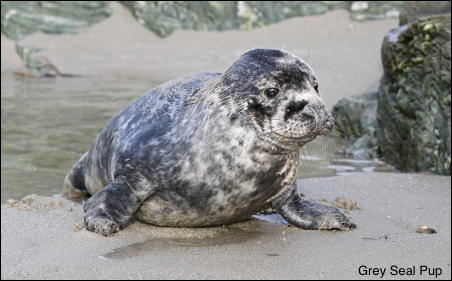
You would have thought that when you visit a place for the 102nd time there would be no surprises awaiting you but you would be wrong. Islay last week was exceptional in what it produced. Firstly we had a fall of Redwings from iceland that was unbelievable in the number of birds involved. This weeks gallery photos were taken alongside a crofters garden. At the same time Whooper Swans were arriving from the same direction and in one day we counted 328 spread across the island. One loch alone held nearly two hundred Swans which was the most we have ever seen on Islay in one place.
We used the acute senses of our Cocker Spaniel to home in on two Grey Seal pups which is more than we have ever found before. A morning on Jura produced three dog Otters within five minutes and then a female with two young later on. These broke our long standing day record of five but even so failed to produce any photos!
The best was yet to come when a walk on a heather moorland at dusk found eight Hen Harriers going to roost. It had always been a dream of mine to find an unknown roost of Hen harriers and it finally happened. How can it ever get better than that?
Oh and in-between all the above we managed to call in virtually every cafe on the island, one of them three times!! Click here for gallery







